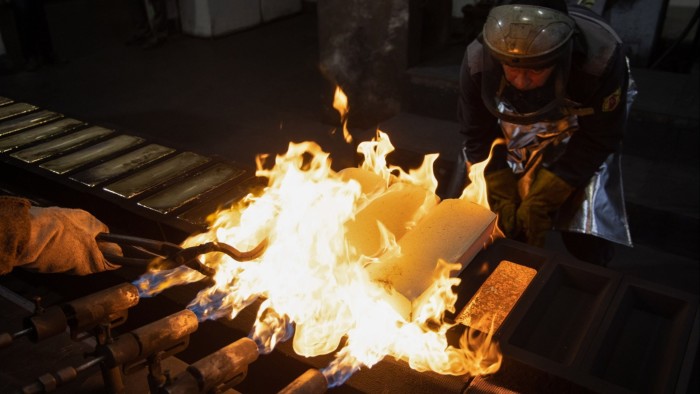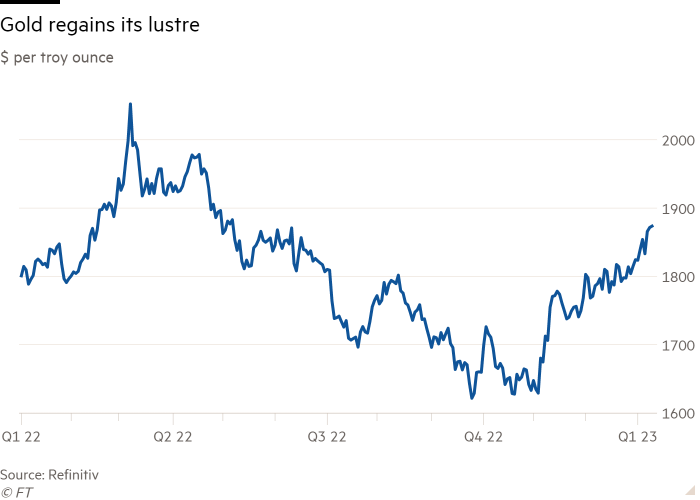Gold prices surge on expectations for slower Fed rate rises

Roula Khalaf, Editor of the FT, selects her favourite stories in this weekly newsletter.
Gold prices have ripped higher over the past two months as expectations that the US Federal Reserve will slow its interest rate rises boosted the precious metal.
Prices of the yellow metal have risen 15 per cent since November 3 to almost $1,900 per troy ounce, reaching the highest level since April 2022.
The rally comes as the market increasingly expects that the Fed will slow the pace of its increases in borrowing costs as inflation eases off its highs. Higher interest rates make gold, which unlike bonds provides no regular returns, less attractive.
“Broad financial market expectation that the Federal Reserve will need to pull back on aggressive monetary tightening is helping to support the gold market even as Fed speakers show no sign of turning yet,” said analysts at Emirates NBD.
Analysts also said slower Fed rate rises compared with other central banks, such as the European Central Bank, could put downward pressure on the US dollar, which rose sharply last year. A weaker dollar tends to benefit commodities, including gold, since it makes them less expensive for buyers outside the US.
Gold’s latest 50-day run marks its best since the coronavirus pandemic shook global markets in 2020, which sent prices above $2,000 per troy ounce.

Gold prices slid sharply last year after hitting a record high in March as central banks around the world moved to raise interest rates to stymie inflation and the dollar was boosted by the strength of the US economy.
That weighed on investor appetite for gold with a second consecutive year of decreasing demand for gold ETFs. Investors sold $3bn worth of physically backed gold ETFs in 2022, a 3.4 per cent decrease to $202.7bn of global holdings at the end of December, according to the World Gold Council, a trade body.
Analysts say gold prices were still resilient given how fast the US central bank moved to rate rises thanks to record levels of central bank buying and strong retail investor demand as cryptocurrencies and tech stocks dropped.
The People’s Bank of China revealed at the weekend a further 30 tonne purchase of gold in December, following on from its first reported monthly purchase of 32 tonnes in more than three years in November.
Traders are now looking for signs on how persistent inflation will be to gauge the outlook for monetary policy. Phillip Streible, chief market strategist at Blue Lines Futures, a brokerage, said that gold could break through $1,900 per troy ounce if the US consumer price index data on Thursday are weaker than expected.
“Once you get in the 1900s, it becomes a gravitational pull towards $2,000,” he added.
MKS PAMP, a precious metals group, predicts an average price of $1,880 per troy ounce this year with the potential for an even higher price in the case of continuing volatility in the financial markets, lower global growth or faster cooling of inflation.
“Gold has been down on a hawkish Fed fighting inflation but it is not out with upward trajectory from here on out,” it said.
However, James Steel, HSBC’s veteran precious metals analyst, added that retail investor demand for gold, particularly for jewellery, begins to bite when prices rise above that level, capping gold’s potential rise.
And some are cautioning that a less aggressive Fed policy has already been largely priced in. RBC analysts warned that market expectations of Fed rate cuts from mid-year “are not yet a foregone conclusion”.
Additional reporting by Chris Flood
Comments